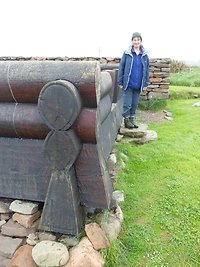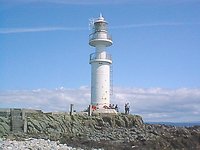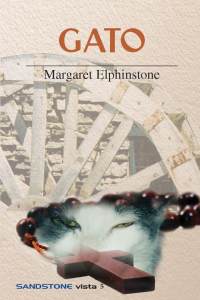Islanders
I wrote my first novel, Islanders, in the winter of 1979. I was living at Northbanks, on the Shetland island of Papa Stour. At that time there were over 30 people living on the island, some of them born and bred there, and others part of an influx of young people seeking an alternative life style. The word ‘hippy’ had more connotations in Shetland than it had in California, but that’s another story. We’d already had a home-from-home on Papa Stour for several years, with my friend Vicki and her young family. My family and I were also regular visitors to Fair Isle, first staying at the Bird Observatory, and later with my friend Anne Sinclair. The move from mainland Shetland to a small island was a step I’d long wanted to take.


Every summer, while on Papa Stour, I’d taken part as a volunteer on an archaeological dig directed by Barbara Crawford of St Andrews University. Barbara had studied a document in Copenhagen, dated 1299, describing a land dispute on Papa Stour. Standing before the King’s representative in the King’s House on the island, a woman, Ragnar, had stated her case that she should retain her farm at Bragasetter. Women who stand up for themselves are a familiar saga motif, one which was to inform two of my novels.
Landscape and place-name evidence led Barbara to the Biggings as the probable site of the King’s House. Sure enough, over several digging seasons, a high-status building emerged. Island legends, collected by local historian George Peterson, added another strand to the historical and archaeological narratives.
As I scraped away with my trowel on the dig or walked the coastline and hills of Shetland, a story of my own began to take shape. During that subsequent winter on Papa I started to write it down. I was working as a home help for Helen and Peter, natives of Papa, who gave me useful information about the old days, and taught me various skills that also found their way into my writing.
For the first time I had the time, space and confidence to address my long-held notion that I could write a novel. I wrote at the kitchen table, on a portable typewriter, by the light of the paraffin Tilley lamp. My children still describe - not too bitterly - how they had to play in the dark, because I had commandeered the only light. I kept my reference library in a fish box by the stove. When I had more questions, I would walk up to the phone box in the dark of the evening and call my friend Willie, a former Shetland Library colleague. I would tell him what I needed him to look up for me in the Shetland Room, and the next day he would be on the phone with the answers.
The writing felt more like a voyage of discovery than a planned itinerary. When I read Islanders now, I see things I would have done differently. But looking back, I see those months on Papa as one of the most fulfilling, as well as one of the most solitary, periods of my life.

Once Vicki came to check on me, because no one had seen me for over a week, though my children were still turning up at school every day. I hadn’t noticed the time passing; I was writing. Early visitors included the men building the new lighthouse on the Vee Skerries (right). They’d come up from the jetty to Northbanks to get fresh water, and give us fresh mackerel.
I had no idea where the writing would take me. I wasn’t thinking about the outside world at all, or what would be the outcome of my efforts. I was going further and further into the story, on my own in the dark of a Shetland winter. That was what mattered; later, re-writing and publication were just the necessary postscript for the book to find its readers.
Islanders was my response to nearly eight years in Shetland. The Shetland landscape, and the sea, had changed how I saw the world. The past is written so clearly on the land there. Human history is embedded in the land everywhere, but so often it has been covered up or obliterated. Working in Shetland Library, I’d read my way through the Shetland Room and absorbed Shetland’s history and literature. I was captivated by the Icelandic sagas, with their taut narratives and sparse, understated style. The saga characters began to haunt me - heroic, appalling, violent, witty, and altogether human, but on a larger scale than I was used to, as if the fine northern air had inspired more life in them than we breathe in our stale world.

In 1980 I reluctantly left Shetland and the manuscript sat in a drawer for ten years. By 1990 I had published other books. Then, wondering what to write next, I unearthed Islanders. Over the next year I wrote it all again. I was living in Edinburgh, where I had the National Library of Scotland as a resource, and old friends helped by commenting on the re-written ms, particularly Barbara Crawford, Sean Milligan of Stromness, and Anne Sinclair of Busta, Fair Isle. Islanders was published by Polygon in 1994 and has since been republished by Kennedy & Boyd.
The Incomer or Clachanpluck
I wrote The Incomer in the winter of 1985/6. I’d already published some short stories, and a new idea gradually expanded into a novel. It’s centred on a fiddle player, Naomi, who comes to a remote village and spends the winter, bringing not only her music, but also a certain amount of havoc, after which nothing is quite the same again. The most powerful person in the village is Naomi’s opposite, Emily, a stable, strong, less volatile presence around whom the community revolves. If anything, I’d identified most strongly with Naomi, the incomer of the title, who makes her own music and goes freely on her way. I was astonished when my then teenage daughter said, “You’re Emily, aren’t you?” She’d put her finger on the central conflict in the book.
I wanted to call the novel Clachanpluck, which is the original name of Laurieston, where I lived. The time is different, but the topography is accurate, except that there isn’t actually a cave by the waterfall. The Women’s Press, based in London, said Clachanpluck couldn’t be the title as no one would be able to pronounce it; this was my first suggestive encounter with a London publisher. Maybe the new title was more apt, with its suggestion of not quite belonging anywhere.
I now see The Incomer as very much a novel of its time. I’d been living in an alternative community; I’d left partly in order to start writing again. These were the years when the women’s movement was reaching its zenith, anti-nuclear protests were at their height, and the two forces coalesced at Greenham Common.
One of my first stories was written on a bus going from Galloway to Greenham.The Incomer is set in a world that has experienced economic and environmental cataclysm. I don’t mention nuclear holocaust - the immediate cause was not the point - but all the reviews did. The world of The Incomer is post-industrial, at once retrospective and futuristic. I thought it was about what might happen. Looking back, I think it was more about how things were, back then. It was not an easy time in my own life, but I think there was more hope.

The Incomer was published by The Women’s Press in 1987, and reprinted by Kennedy & Boyd in 2004 as part of a series of reprints of Scottish women writers. The new edition can be ordered online. It has an introduction by Dorothy Macmillan, who explains much more clearly than I can what the book is really about.
A Sparrow's Flight
One of the most loyal adherants to the world of A Sparrow’s Flight is Alison Phipps, now head of the first UNESCO Asylum Panel. She wrote the introduction to the new edition, in which she discusses how the book reflects the unstable society in which we find ourselves. A Sparrow’s Flight has had few readers; it was published by Polygon in 1989, when Polygon had enough troubles of its own. A very few of those few readers, like Alison, have told me that they found the book speaks to their condition in the modern world, and that they have found it sustaining in their active careers.
When I sent my first books to my one-time mentor, and Professor of English Literature at Durham, Ted Dorsch, he wrote back to say how well I expressed the need to make music, and how sustaining it must be to me to have this musical ability. Since I can play no instrument, nor sing a note in tune, I was delighted that my novel could deceive so convincingly. I put into the writing what I cannot play or sing: a delight in music thatI have no other way of expressing. And please, if you read this, do not write to inform me that everybody can sing, and you know how I could learn to. I know. I have been told - often. I choose not to do this when I have other, less frustrating, ploys ahead. A Sparrow’s Flight is as near to playing the fiddle as I will ever get, and that is why, underneath everything else in the book, there is hope.
It is set in the same possible future as The Incomer, and once again Naomi is the central character. With her companion Thomas, she sets out on a journey, from Lindisfarne to Borrowdale. In her world the only way to get there is to walk. I followed her footsteps, with my dog, camping in the Cheviots, crossing Liddesdale, but not fully tracing her circuit around the ruins of Carlisle, as they exist in her post-industrial world. Once again the music dominates the story; this time Naomi is on the track of the lost music of the past, which she has to learn to read again.
At the heart of the book is the question of what is worth preserving, and what will randomly find its way into a future in which almost all our material culture has been swept away. Nearly thirty years on, the concern is more pressing than ever. I think the book, for all its publisher's label of 'futuristic fantasy', is fairly realistic in its ecological prognosis, but much more hopeful about human nature than it would be if written today. A Sparrow's Flight has also been republished by Kennedy & Boyd
Back to top
Back to Home Page

Gato
Gato, is set in a Medieval mill. It’s about a child who has to make its own way in the world. It formed part of a series published by Sandstone Press for emergent readers, that is to say, adult readers who need the reading process to be accessible to them.
The books in the series were also used as English language readers for asylum seekers in Scotland. I was delighted to hear that asylum seekers from rural areas related to the story, as it was like the places they came from.
There is a twist to Gato, regarding the gender of the narrator. Ordinary readers usually got it quite quickly, but the compilers of some educational questions, which went with the book, completely missed the point. Interesting.



